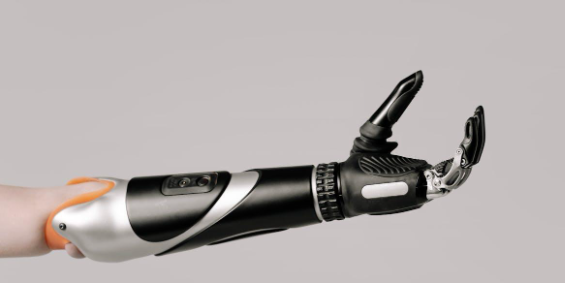Biohacking has moved from niche experiments to a global movement reshaping how we think about human potential. With advancements in technology, we’re unlocking new ways to optimize our bodies and minds, pushing the boundaries of what’s possible. From wearable devices tracking every heartbeat to genetic engineering promising personalized health solutions, the future of biohacking is nothing short of revolutionary.
As we embrace these innovations, ethical questions and scientific breakthroughs intertwine, shaping a future where technology and biology merge seamlessly. Pioneers like Dave Asprey, often called the “Father of Biohacking,” have already shown us the potential of this field. But what’s next? Together, let’s explore how emerging technologies are enhancing human performance and redefining how we live, work, and thrive.
Understanding Biohacking
Biohacking combines biology, technology, and self-experimentation to enhance human performance. It involves practices ranging from simple lifestyle changes to advanced interventions, leveraging scientific knowledge and emerging tools. By optimizing aspects like nutrition, sleep, and brain function, biohackers aim to improve health and capabilities.
Modern biohacking spans various domains, including wearable technology, genetic modification, and nootropics. Devices like fitness trackers and sleep monitors allow us to gather real-time data, helping individuals fine-tune their routines. Genetic engineering, including CRISPR, creates opportunities for modifying DNA to boost immunity or reduce inherited risks. Nootropics, such as L-theanine blends, support cognitive function.
Many biohackers focus on balancing essential minerals like calcium magnesium to optimize physical performance. Calcium contributes to muscle contraction and nerve signaling, while magnesium aids recovery and energy production. Monitoring these levels creates tailored nutrition plans, enhancing endurance and strength.
The growing intersection of biology and technology is driving biohacking advancements. Biohackers now use AI-powered platforms to analyze personal health data and track progress. This integration creates smarter solutions, enabling more precise, science-backed interventions.
Technological Advancements in Biohacking
Technology plays a critical role in the evolution of biohacking, enabling more precise ways to monitor, augment, and optimize human performance. Emerging tools continue to redefine our understanding of physical and cognitive enhancements.
Wearable Devices
Wearable devices offer continuous monitoring of physiological markers, making real-time feedback accessible to users. Fitness trackers measure heart rate, sleep cycles, and activity levels, offering data to fine-tune performance. Smart rings now track blood oxygen levels and stress markers, providing insights into overall health.
Advanced wearables integrate sensor technology to monitor hydration, recovery, and even micronutrient levels. Metrics like calcium and magnesium deficiencies can influence muscular function, making these analytics valuable for achieving peak performance. AI integration in wearable tech refines predictions and customizes recommendations based on user data, enhancing biohacking applications.
Implantable Technologies
Implantable technologies provide internal augmentation, enabling deeper intervention in biohacking. Devices like RFID chips allow for seamless interactions with smart systems, improving convenience and user control. More advanced implants, such as neurostimulators, target cognitive and neurological enhancements by delivering precise stimulation to the brain.
Biometric implants gather continuous data on internal processes, such as blood glucose levels or mineral imbalances. These innovations can prevent deficiencies, optimize bodily functions, and address potential health issues proactively.
Genetic Engineering
Genetic engineering transforms biohacking by enabling the direct modification of DNA. CRISPR technology offers precise genome editing, allowing for corrective adjustments in genetic code to reduce susceptibility to diseases or enhance traits like muscle development or cognitive abilities.
Gene therapy explores applications for augmented recovery, prolonged endurance, and metabolic efficiency. Advances in synthetic biology could expand possibilities by engineering custom genetic solutions tailored to individual genetic makeup. Ethical considerations continue to shape the adoption of these techniques as researchers push biohacking into unprecedented territory.
Key Benefits of Biohacking for Human Performance
Biohacking leverages technological and biological tools to unlock human potential. It offers enhancements in physical health, cognitive performance, and longevity.
Physical Health Enhancements
Biohacking provides personalized strategies to optimize physical health. Wearable devices monitor heart rate, sleep cycles, and hydration, enabling precise lifestyle adjustments. Advanced platforms analyze micronutrient data, helping balance essential minerals like calcium and magnesium, which are crucial for muscle performance and bone health. Implantable technologies, such as RFID chips, enhance recovery and monitor physical stress in real-time. These innovations drive improved endurance, recovery, and overall fitness.
Cognitive Performance Improvements
Biohacking supports cognitive enhancement through nootropics and neurotechnology. Nootropic compounds improve memory, focus, and mental clarity, while neurostimulators enable targeted brain stimulation for better concentration and mood. AI-driven analytics from wearable EEG devices collect real-time brain activity data to optimize mental performance. Genetic modification tools like CRISPR offer future possibilities for addressing cognitive limitations on a genetic level, unlocking improved learning capacity and decision-making skills.
Longevity and Aging Solutions
Biohacking integrates interventions to delay aging and extend lifespan. Genetic engineering targets cellular aging and regulates DNA repair mechanisms, helping combat age-related decline. Lifestyle-focused biohacks including caloric restriction and intermittent fasting improve metabolic health, extending longevity. Advanced technologies analyze biomarkers linked to aging, identifying personalized anti-aging treatments. Maintaining the right balance of calcium and magnesium through biofeedback devices further supports bone density and cellular health, both pivotal for sustaining vitality over time.
Ethical and Privacy Concerns
Rapid advancements in biohacking technology present ethical and privacy challenges. As we explore these innovations, addressing potential risks and establishing regulatory frameworks becomes critical.
Risks of Biohacking Technologies
Biohacking technologies, like genetic engineering tools and implantable devices, raise concerns about misuse and data security. Implantables such as RFID chips could expose sensitive personal information if hacked, compromising user privacy. Genetic editing, while promising in addressing health issues, may lead to unintended genetic alterations or misuse in unregulated environments.
Wearable devices tracking health metrics also collect vast amounts of data. If improperly managed, this information might be exploited by third parties, including companies and insurers. Balancing these risks with technological growth is essential.
Balancing Innovation and Regulation
Establishing robust regulations ensures safety and ethical use of biohacking technologies. While innovation drives new possibilities, unregulated advances could lead to ethical dilemmas, such as unequal access to enhancements or exploitation of genetic interventions.
We advocate for frameworks protecting user data and ensuring transparency in biohacking applications. Government and industry collaboration is key in creating guidelines addressing risks while fostering responsible growth. Standardizing practices can promote equitable access without hindering technological innovation.
What to Expect in the Future of Biohacking
Biohacking is set to advance with emerging technologies and growing societal acceptance. It’s reshaping how we approach health, performance, and longevity.
Emerging Technologies
Emerging technologies are transforming biohacking by integrating advanced tools and innovations. Non-invasive monitoring devices, such as wearable biosensors, are evolving to track biomarkers like hydration, blood glucose, and essential minerals, including calcium and magnesium. These devices enable more precise health optimization.
Biotechnologies like CRISPR are becoming sophisticated enough to edit genes with greater accuracy. Future applications may include correcting genetic mutations linked to diseases or enhancing physical traits. Artificial intelligence (AI) platforms are also gaining prominence, processing vast datasets to deliver personalized recommendations for diet, supplements, and fitness based on individual biological profiles.
The intersection of nanotechnology and biohacking expands possibilities for cellular-level interventions. Nanorobots could monitor or repair cells, offering revolutionary methods for preventing disease and improving recovery rates.
Shifting Societal Perceptions
Shifting societal perceptions are driving broader acceptance of biohacking practices. What was once seen as experimental is now embraced as a proactive approach to wellness. With increasing access to data-driven devices and personalized health insights, more individuals are adopting biohacking in their daily lives.
Corporate wellness programs are integrating biohacking tools like smart wearables and AI-driven health platforms to enhance employee productivity and well-being.
Regulatory frameworks are also evolving to address ethical and safety concerns, ensuring biohacking technologies become more reliable for mainstream use. This shift signals a future where biohacking grows from an individual experiment to a normalized part of health management.



































